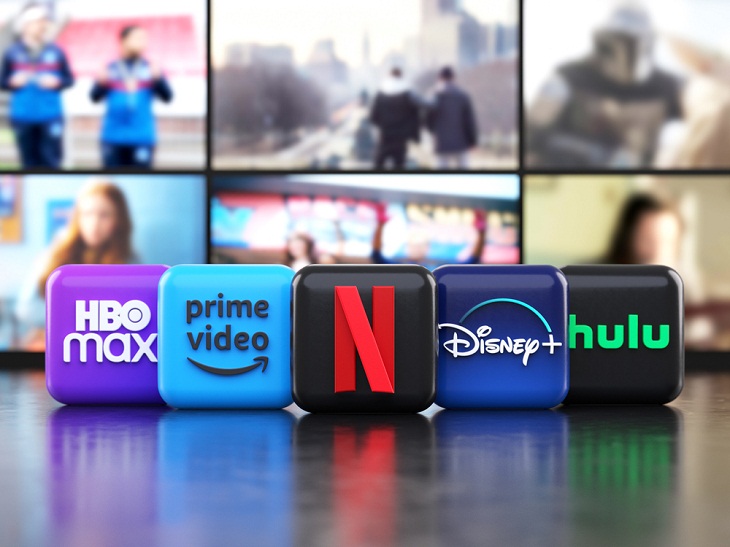For starters, consider dropping one of your streaming services. Just find out which one’s collecting dust and cancel it. Maybe you signed up for Apple TV Plus last year and have already seen all its good shows. If so, there’s no reason to keep paying for it. You might save just $ 7 a month, but that’s still a win! And don’t worry—you can always jump back in when a new season of your favorite show drops.
2. Take advantage of free trials
Most streaming services (besides Netflix) offer free trials. Time it right, and you can binge a whole season of a show you're interested in without spending a penny. Just set a cancelation reminder so you don't get charged when the trial's over. Pro tip: Cancel right after you sign up for a trial. This way, you're covered if you decide you don't like the service.
3. Check out what's available on free services
The best way to slash your streaming expenses is to opt for free services. Not every show demands immediate viewing; sometimes, you just want something light to unwind with. On those evenings, why not check out the free channels available on your streaming device? You can catch classic episodes of Leave It to Beaver on the Roku Channel, dive into old The Dick Van Dyke Show and Cheers episodes on Pluto TV, or explore a vast collection of movies and shows from Lionsgate, MGM, Paramount Pictures, and Starz Digital on Tubi TV.
The truth is, there are tons of free options available with quality TV and movies. You might deal with some commercials on most services (except for library options like Hoopla and Kanopy), but you can enjoy a wealth of content, including free live news—all at no cost!
Related: 10 Safe & Free Movie Streaming Sites Anyone Can Use
4. Choose basic, nonpremium subscriptions

Gone are the days when streaming services offered only a single pricing model. Nowadays, several platforms have rolled out more wallet-friendly, ad-supported plans. This means you'll watch a few ads, but you'll pay less each month—a handy option as prices for subscriptions continue to rise.
For example, you can easily switch to the ad-supported tiers for both Hulu and Paramount+. Similarly, budget-conscious viewers can also access ad-supported subscriptions from Disney for $8 a month, Max for $10 a month, and Netflix for just $7 a month. These ad-supported versions haven't seen the price jumps that the ad-free plans have experienced recently.
5. Consider taking a bundle

Just like cable, streaming services are bundling up! Disney offers Disney+, Hulu, and ESPN+ together. Verizon customers can get Netflix and Max, or the Disney bundle, for $10 a month. Warner Bros. Discovery and Disney even teamed up for a Disney+/Hulu/Max package. Coming soon: Venu Sports, a massive sports bundle with ESPN+, NFL, NBA, and more, which you can bundle with Disney+, Hulu, or Max. Expect more bundles as companies try to keep subscribers and fight cancelations.
6. Don't miss the chance to share log-ins!

Since the launch of streaming services, sharing passwords has been the norm, with many companies even encouraging it. But Netflix's crackdown (limiting sharing to households) has everyone wondering who's next. Disney+ plans to charge for extra users, and Hulu and Warner Bros. Discovery are tightening up too. For now, Amazon and Apple allow generous sharing, and many others let you create multiple profiles. But watch out for limits on simultaneous streams. Netflix now charges extra for sharing outside your household.
7. Rotate services seasonally
Instead of subscribing to multiple platforms simultaneously, try rotating your subscriptions based on your viewing preferences. For example, if you know a specific show or series is premiering on a particular service, sign up for it, watch what you want, and then cancel once you've finished. This way, you can enjoy the content without paying for multiple services at once. Just remember to mark your calendar for renewal dates and revisit your rotation plan every few months to find new shows that interest you!
8. Set a monthly streaming budget
It's easy to lose track of streaming costs, especially with automatic renewals. Create a dedicated streaming budget and actively track your expenses. Use budgeting apps or spreadsheets to monitor your spending across all platforms. Setting a limit helps you make conscious decisions about which services to prioritize and when to cut back. Regularly review your spending and adjust your subscriptions as needed. Stick to your budget each month and resist the urge to pick up new subscriptions on a whim.
9. Explore Live TV streaming alternatives
If you're primarily interested in live TV, explore alternatives to traditional cable replacements like YouTube TV or Hulu + Live TV. Network-specific apps often offer live streams with limited commercials for free, especially for sports. Using a digital antenna for local channels can also supplement your live viewing options without monthly fees. Combine these with a more affordable on-demand streaming service for a comprehensive and cost-effective solution.








